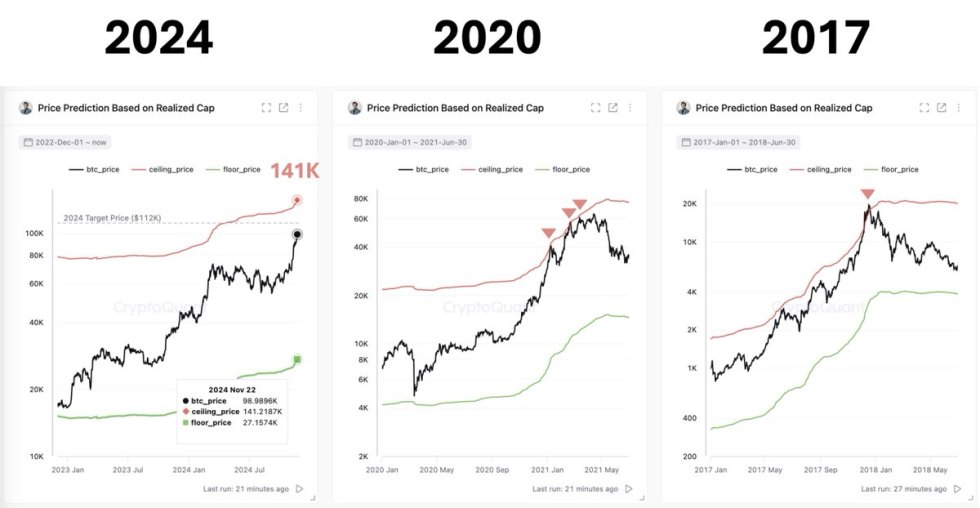Not that anyone is asking, but Coin Center inserted itself into the debate at hand. Is the Post-Merge Ethereum a security now? Moving from Proof-Of-Work to Proof-Of-Stake without pausing the operation was quite a feat, but it came with a cost. Many things are completely different at this stage, and those new characteristics might put Ethereum in the regulator’s field of vision. Is staking a similar activity to mining or are they totally different?
Besides that, what does this whole situation have to do with Coin Center? The organization defines itself as “the leading non-profit research and advocacy center focused on the public policy issues facing cryptocurrency and decentralized computing technologies like Bitcoin, Ethereum, and the like.” Coin Center’s article “Does the Merge change how Ethereum is regulated? (No.)” tackles the issue at hand.
“We do not believe that the technological differences between POS and POW warrant any different treatment,” Coin Center states summarizing its position. “On the securities law side, the SEC has always stressed that they look at the economic realities of transactions rather than the terms or technologies used to create those realites. The approach is substance over form,” they say summarizing the SEC position.
ETH price chart for 09/16/2022 on ForexCom | Source: ETH/USD on TradingView.comCoin Center Thinks That Mining And Validating Are Basically The SameTo soften the blow from this section title’s affirmation, Coin Center limits the scope to “the economic realities of validating.” We all know what they’re saying, though.
“The economic realities of validating a chain through mining and validating a chain through staking are similar. In both cases validators are an open set of participants and the only precondition to participation is provably suffering some cost. In proof-of-work that cost is energy and computing resources, in proof-of-stake it is the time value of money (e.g. the opportunity cost of holding an asset needed for staking rather than spending it).”
In Bitcoinist’s first article about the Post-Merge Ethereum, we quoted Gabor Gurbacs, Strategy Advisor at VanEck, whose thesis was that “even if it’s not a security, Ethereum was bound to attract regulatory attention post-merge.” He recently tweeted:
“I am not saying that ETH is necessarily a security because of its proof model, but regulators do talk about staking in the context of dividends which if one feature of what securities laws call a “common enterprise”. There are other factors in the Howey test too.”
The Howey test, in turn, refers to these “four criteria to determine whether an investment contract exists:”
- An investment of money
- In a common enterprise
- With the expectation of profit
- To be derived from the efforts of others
That leads us to…
Coin Center Doesn’t Think That The Profits Derive From The Efforts Of OthersNow that we’re all familiar with the Howey test, this paragraph makes more sense:
“Central to classification as a security is ongoing reliance for profits derived primarily from the efforts of others. Both consensus mechanisms are explicitly designed to avoid any such reliance by creating an open competition amongst strangers wherein any self interested participant can and will fill the gap left by any other unresponsive, corrupt, or censorious participant.”
That might be true, but, what about the effort of all the companies and developers working on the Ethereum platform? They provide value that translates into profits. And people buying ETH are investing in them, in a way. Chairman Gensler’s other example included an additional element. “If an intermediary such as a crypto exchange offers staking services to its customers, Mr. Gensler said, it “looks very similar—with some changes of labeling—to lending.”
Coin Center disagrees with extreme prejudice:
“Our analysis of the technology, however, suggests that there should be no differential treatment of projects based merely on the choice of one or another permissionless consensus mechanism.”
Not only that, they go as far as to call them “commodities”:
“Otherwise decentralized cryptocurrencies that use proof of stake consensus are commodities, and, therefore, the CFTC has spot market policing authority and derivatives market supervisory authority.”
Maybe, but, is there a decentralized Proof-Of-Stake cryptocurrency? That’s certainly up for debate. Especially considering Proof-Of-Stake’s inherent propensity towards centralization.
Featured Image by Ana Flávia on Unsplash | Charts by TradingView
You can get bonuses upto $100 FREE BONUS when you:
💰 Install these recommended apps:
💲 SocialGood - 100% Crypto Back on Everyday Shopping
💲 xPortal - The DeFi For The Next Billion
💲 CryptoTab Browser - Lightweight, fast, and ready to mine!
💰 Register on these recommended exchanges:
🟡 Binance🟡 Bitfinex🟡 Bitmart🟡 Bittrex🟡 Bitget
🟡 CoinEx🟡 Crypto.com🟡 Gate.io🟡 Huobi🟡 Kucoin.




















Comments